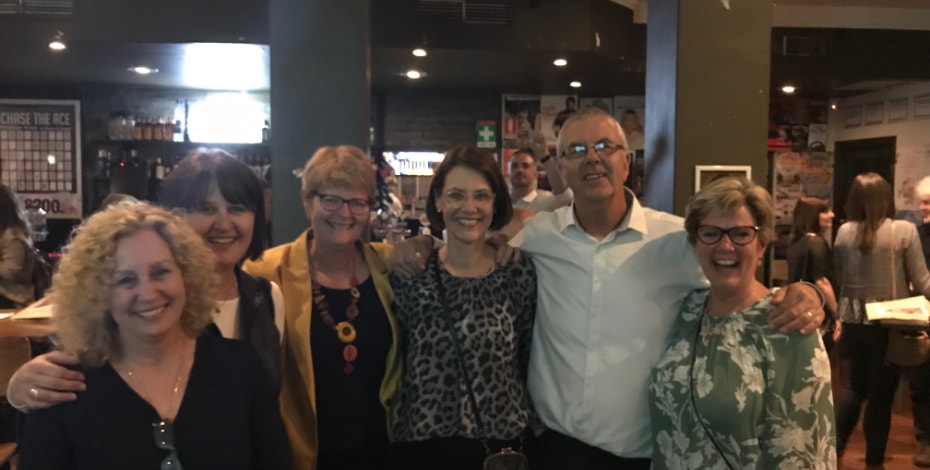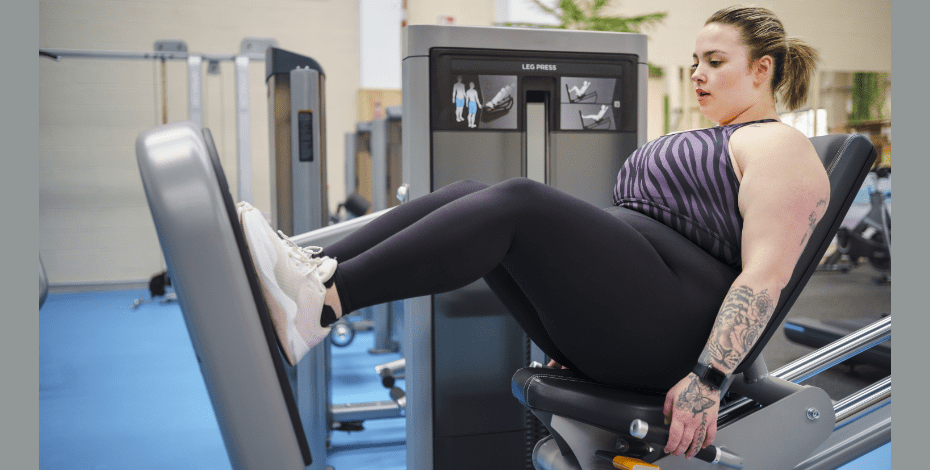
A salute to a 40-year career

As a soccer mad kid, Ian Cooper had his first inkling to become a physiotherapist. It was an idea that sparked a 40-year career, culminating as head of physiotherapy at Sir Charles Gairdner Hospital (SCGH) in Perth.
‘There they were running out on to the pitch and I thought “what a great job they have”,’ Ian laughs. ‘As a youngster my goal was to play professional soccer but, sadly, my skills did not match my aspirations and I saw physio as a means to be involved in sport. Interestingly, as soon as I graduated I tinkered in a number of sports physio roles; however, my real interest was in neuro rehab and I never pursued a career as a sports physio.’
Sports’ loss was public health’s gain, with Ian Cooper being a longstanding champion for supporting student education, establishing professional standards and advancing clinical opportunities within hospitals. Immediately before a six-year stint as head of physiotherapy at SCGH, Ian was deputy head for 15 years and previously one of its senior clinicians. Stepping down from his leadership role in late July, he has taken long-service leave to transition to retirement in March next year. As he reflects on his career, it quickly becomes clear it’s the people aspect he enjoyed most.
‘I don’t feel I can lay any claims to making a personal difference to the profession, but seeing how colleagues have pursued their carers has been wonderful,’ he says. ‘One thing I am proud of is being part of a larger team at SCGH and other local hospitals in establishing the advanced scope physiotherapy roles in WA. To see physios in the public sector performing a role that they are highly skilled to perform and receiving the recognition from their medical colleagues is something that I was very proud to play a part in.’
Ian graduated with a diploma in physiotherapy from Queens College in Glasgow in 1979. He then worked at two hospitals in the UK before moving to Sydney in 1983 with his Australian-born wife, April, a then-graduate physiotherapist, whom he met while on rotation at the Glasgow Royal Infirmary.
‘We were both at one of the hospitals. I can still see her now as a young physio student, I still consider myself very lucky after all these years,’ he says. ‘Before settling down we wanted to travel and as Australia had the best reputation for producing physiotherapists we thought we would head over.’
After two years in Sydney, the couple opted to move to Perth, securing jobs at SCGH. ‘I started work at Charlie’s thinking I would be there for a year or so. How wrong was I?,’ Ian says. ‘We both just loved everything Perth and the hospital had to offer—it has been so good to us.’
Likewise, it can be said Ian has been good for Western Australia and his beloved profession. Two years after joining the APA in 1986, he actively took on roles within a national group and the Western Australian Branch, serving as president from 1995 to 1997. He has taught hundreds of students as an adjunct associate professor at Curtin University of Technology’s School of Physiotherapy and Exercise Science, and mentored countless more. Clinical education, he says, is an integral part of physiotherapy education in Australia, with SCGH’s student placement program enabling more than 300 undergraduates extended access to supervised practice. Establishing the program is a career highlight.
‘If you want good future colleagues, you need to be part of their ongoing teaching,’ Ian says. ‘We saw an opportunity to integrate students across the wards and within the clinics so they could be with us all-year round. It’s been a win-win … as the hospital has extra labour and students get an opportunity to learn from excellent clinicians, consolidate theory into practice and develop clinical and professional expertise. It is absolutely essential that we assist students to consolidate their academic teaching into the clinical world.’
While leadership roles did minimise his own clinical work in recent years, patient welfare always remained a priority. ‘Working clinically reminded me what physio was all about—trying to help patients achieve their goals. Nothing can beat the buzz of helping a patient rehabilitate after a significant neurological event and being part of their recovery. And I find teaching really stimulating. It’s a great experience when you know you have challenged students and made them think.’
He credits Associate Professor Sue Jenkins with his own career development in research. Together, they have published papers on the topic of clinician–patient relationships, an interest initially gained through early volunteer work with the APA’s then-known Branch Investigation Committee, a pre-cursor to today’s Professional Standards Panel. ‘Sue is quite an inspirational person and introduced me to the challenging world of research and through her mentoring I was encouraged to further investigate professional boundary issues.’
Even as he approaches retirement, Ian is not ready to leave physiotherapy and plans to continue volunteering as a research assistant with a number of local research teams. ‘The profession that I joined 40 years ago bares little semblance to what it is today I am so proud to be a physio and part of a profession that is strongly evidence based and contributes so much to the health and wellbeing of the community.
‘I realised early on in my career that if I wanted to be part of a profession that was recognised and respected then I needed to play a part in that, as no non-physio bodies existed to advance the profession. The APA is made up of many physio volunteers, and if you want the profession to continue to advance, then you need to get involved,’ he says.
‘As many colleagues know, research funding is difficult to achieve, even for our brightest researchers. If there are some projects that require someone to collect data but don’t have the funds to pay, then this is something I would love to do. It will also keep me in contact with patients and clinical research.’
While optimism is high for the future direction of his profession, Ian is concerned that data from Australian Institute of Health and Welfare highlights a change in demographics of physiotherapists working in public health. ‘The public sector physio certainly isn’t a dinosaur, but our numbers as a percentage are dwindling. Like all countries in the world, Australia is struggling to contain its health budget and while there will always be a role for physio in our public system I feel that due to budgetary constraints we can’t always provide the level of service we would like.’
Ian says establishing career paths and investing in ongoing education, including access to hospital training, could be a vital element to help attract or retain professional interest in the sector.
‘It is absolutely essential that we advocate for education and assist students to consolidate their academic teaching into the clinical world … It makes so much sense that the profession invest significantly in our future colleagues’ education. It’s an investment that pays off in the end,’ he says. ‘For me, it’s been great working with such lovely people over the years as they make everything worthwhile.’
© Copyright 2024 by Australian Physiotherapy Association. All rights reserved.






